In the colorful and tactile world of slime, where creativity and commerce intersect, several markets have emerged as bastions of innovation and profitability. From artisanal creators to large-scale manufacturers, the global slime market has witnessed a remarkable evolution, fueled by both consumer fascination and entrepreneurial spirit. One of the standout features of the top slime markets is their diversity. Each market offers a unique blend of products, catering to various preferences and trends. In North America, for instance, the market is characterized by a wide range of textures and colors, with a strong emphasis on sensory experiences and therapeutic benefits. Artisanal slime makers here often focus on using high-quality ingredients and creative packaging to appeal to discerning consumers seeking both playfulness and quality. In Europe, the slime market takes on a slightly different flavor. Here, sustainability and eco-friendliness are significant trends. Many slime manufacturers prioritize biodegradable ingredients and recyclable packaging, aligning with consumer preferences for environmentally responsible products.
The European market also embraces a more minimalist aesthetic, with sleek designs and sophisticated textures that appeal to older demographics seeking stress relief or a nostalgic throwback to childhood. Across Asia, particularly in countries like Japan and South Korea, the slime market thrives on innovation and technological integration. These markets are known for their cutting-edge formulations and advanced packaging techniques. Japanese slime shop enthusiasts, for example, often seek out novel textures and scents inspired by popular culture, creating a vibrant subculture around slime collecting and customization. In the Middle East and Africa, the slime market is burgeoning with local artisans infusing traditional craftsmanship with modern trends. Handcrafted slimes using locally sourced materials are gaining popularity, offering consumers a blend of cultural authenticity and tactile enjoyment. These markets often prioritize community engagement and social impact, with some initiatives supporting local artisans and charities through slime sales.
Social media plays a pivotal role in the success of these markets, serving as both a platform for showcasing creativity and a marketplace for connecting buyers and sellers. Influencers and content creators frequently collaborate with slime brands to reach a broader audience, driving trends and fostering a sense of community among enthusiasts worldwide. Moreover, the educational benefits of slime cannot be overlooked. Many educators and therapists advocate for slime as a tool for sensory development and stress relief, particularly beneficial for children with sensory processing disorders. As awareness grows, the market expands to include educational kits and therapeutic slimes tailored to specific sensory needs. Looking ahead, the top slime markets continue to innovate and adapt to changing consumer preferences and regulatory landscapes. Issues such as safety standards and ingredient transparency remain crucial, prompting industry leaders to collaborate on best practices and regulatory compliance.
